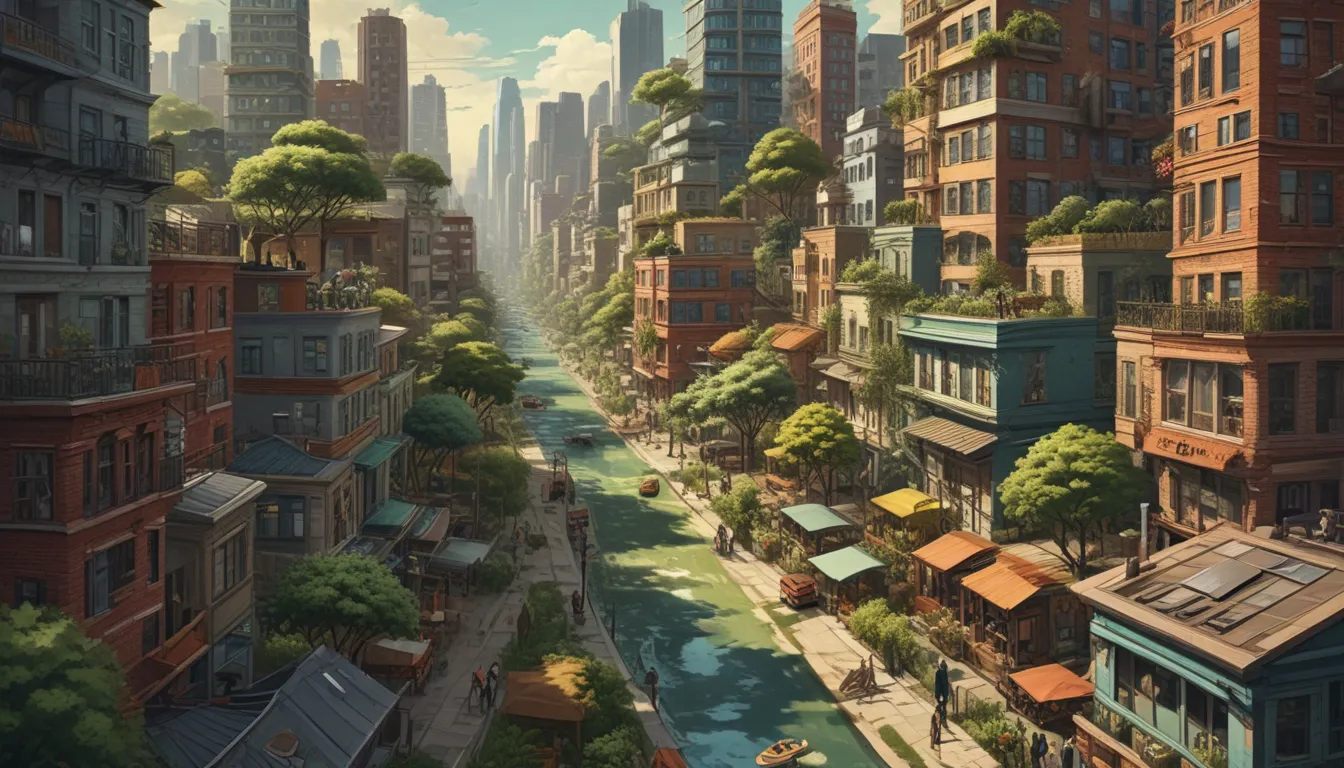A Note About Images: The images used in our articles are for illustration purposes only and may not exactly match the content. They are meant to engage readers, but the text should be relied upon for accurate information.
Urbanization is a universal phenomenon that is reshaping landscapes globally, attracting individuals seeking new opportunities and a higher quality of life to cities. This migration to urban centers has profound implications for the environment, presenting a blend of challenges and opportunities for sustainable development. In this article, we will delve into 13 captivating facts about urbanization and its intricate relationship with the environment. From the growth of megacities to innovative solutions for mitigating negative impacts, we will explore how urbanization influences our ecosystems and natural resources. Whether you are an environmental enthusiast, city dweller, or simply intrigued by our world, join us on an enlightening journey to uncover the fascinating interplay between urbanization and the environment.
Understanding Urbanization and its Global Impact
- Urbanization is a universal trend, where individuals migrate from rural areas to urban centers in pursuit of enhanced opportunities and a better standard of living.
- This rapid urban growth has both positive and negative implications for the environment, with urban areas being hubs of human activities, industries, and infrastructure.
The Environmental Impact of Urbanization
Urbanization and Air Pollution
- The rise in urbanization has led to increased air pollution due to higher concentrations of vehicles, industries, and population in urban areas.
- This heightened pollution levels contribute to respiratory issues and other health problems for residents of urban areas.
Deforestation Amid Urban Expansion
- Urban expansion often leads to deforestation as more land is needed for buildings, roads, and infrastructure developments.
- Deforestation negatively impacts the environment, contributing to climate change and the loss of biodiversity.
The “Heat Island” Effect in Urban Areas
- Urban areas experience the “heat island” effect caused by the concentration of buildings, concrete, and asphalt, leading to higher temperatures compared to surrounding rural areas.
- This phenomenon is a result of materials like concrete and asphalt absorbing and retaining heat.
The Vital Role of Green Spaces
- Green spaces such as parks, gardens, and other natural areas are crucial for maintaining a healthy and sustainable urban environment.
- These green spaces help reduce air pollution, provide habitats for species, and offer recreational spaces for urban residents.
Sustainable Solutions for Urbanization
Urban Agriculture and Local Food Production
- With a growing emphasis on sustainable living, urban agriculture is gaining popularity, utilizing rooftop gardens, community plots, and vertical farming methods.
- These practices help reduce the carbon footprint associated with food transportation and promote locally sourced produce.
Water Scarcity Challenges in Urban Areas
- Rapid urbanization puts a strain on water resources, leading to water scarcity in many urban areas.
- This scarcity has detrimental effects on both the environment and the well-being of the urban population.
Pollution Management and Waste Disposal
- Concentrated population and industries in urban areas pose challenges in pollution management and waste disposal.
- Implementing proper waste disposal, recycling programs, and sustainable practices are essential for maintaining a clean urban environment.
Biodiversity Loss and Ecosystem Disruption
- Urban expansion leads to the destruction of natural habitats, displacing or causing the extinction of various species.
- This disruption in ecosystems can have long-term consequences for biodiversity and ecological balance.
Striving for Sustainable Urbanization
Achieving a Balance Between Growth and Conservation
- Finding a balance between urbanization and environmental conservation is key to sustainable urban development.
- Prioritizing policies and practices that protect the environment while meeting the needs of a growing urban population is essential.
Promoting Sustainable Urban Planning
- Sustainable urban planning involves designing cities with green spaces, promoting public transportation, implementing efficient waste management systems, and prioritizing renewable energy sources.
- These measures aim to combat the negative impacts of urbanization on the environment and promote sustainability.
Addressing Climate Change Through Urban Development
- The concentration of human activities, industries, and infrastructure in urban areas contributes to greenhouse gas emissions.
- Urban development must focus on reducing carbon emissions and promoting sustainability to address climate change.
Conclusion: Navigating Urbanization and Environmental Conservation
As urbanization continues to shape our world, understanding its impact on the environment is crucial. While urban expansion poses challenges such as pollution, deforestation, and biodiversity loss, it also opens doors to sustainable development and environmental innovation. By embracing green infrastructure, renewable energy sources, and eco-friendly practices, we can mitigate the negative effects of urbanization and create more livable and resilient cities. Collaboration among policymakers, urban planners, and communities is vital in finding effective solutions to environmental concerns associated with urbanization. Through prioritizing environmental conservation and integrating sustainable practices into urban development, we can achieve a harmonious coexistence between urban areas and the environment.
FAQs: Answering Your Urbanization Questions
-
How does urbanization affect the environment?
Urbanization impacts the environment through increased pollution, deforestation, loss of biodiversity, and depletion of natural resources. It also contributes to habitat destruction, fragmentation, air and water pollution, greenhouse gas emissions, and the heat island effect. -
Can urbanization be sustainable?
Yes, urbanization can be sustainable with proper planning and eco-friendly practices. Measures such as promoting public transportation, utilizing renewable energy, implementing green building standards, and integrating green spaces into urban design can foster sustainability. -
What are the benefits of sustainable urbanization?
Sustainable urbanization offers benefits like improved air and water quality, enhanced public health, clean energy usage, reduced carbon emissions, and urban resilience. It also enhances livability with efficient transportation, green spaces, and access to essential services. -
How can individuals contribute to sustainable urbanization?
Individuals can contribute by adopting eco-friendly habits like conserving water and energy, reducing waste, using public transportation, and supporting local businesses. Community involvement, advocacy for sustainable policies, and urban gardening can also enhance sustainability. -
What role do policymakers play in promoting sustainable urbanization?
Policymakers play a critical role in promoting sustainable urbanization through regulations on energy efficiency, waste management, and green building standards. Investments in public transportation, green spaces, and renewable energy sources are essential for balancing economic growth with environmental sustainability.
In conclusion, embracing sustainable urbanization is essential for creating greener, healthier, and more resilient cities. By recognizing the challenges and opportunities presented by urbanization, we can work towards a harmonious coexistence between urban development and environmental conservation. Let’s continue to explore innovative solutions, engage in sustainable practices, and collaborate towards a brighter, more sustainable future for our urban environments.






